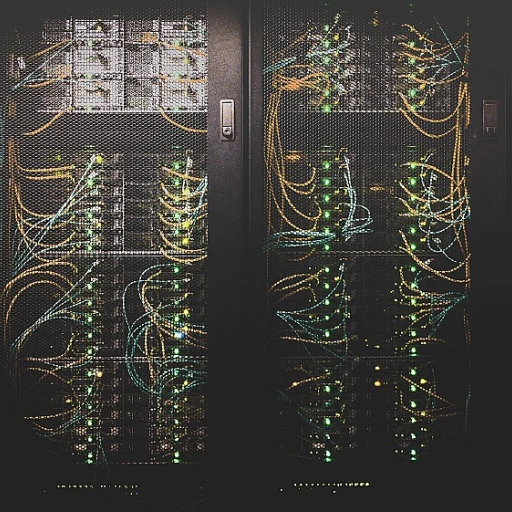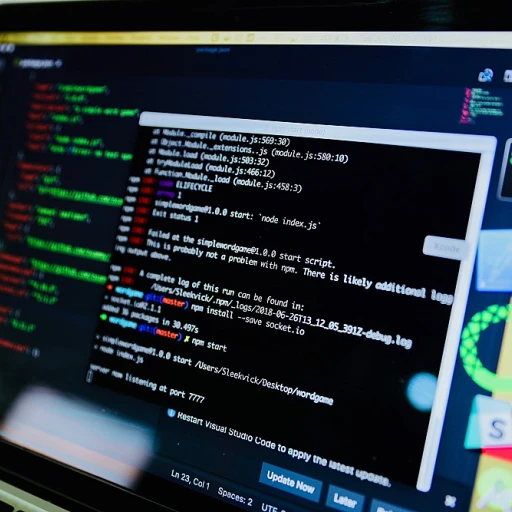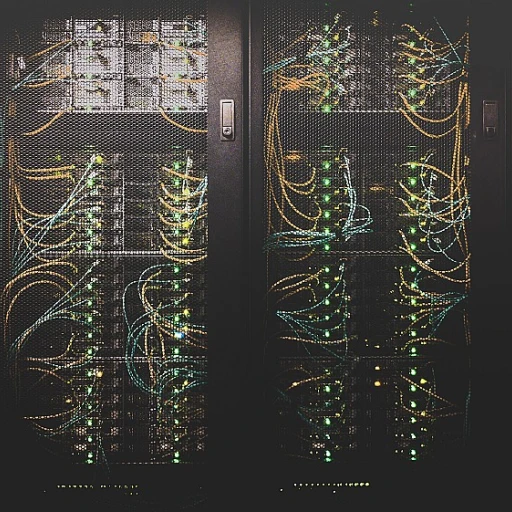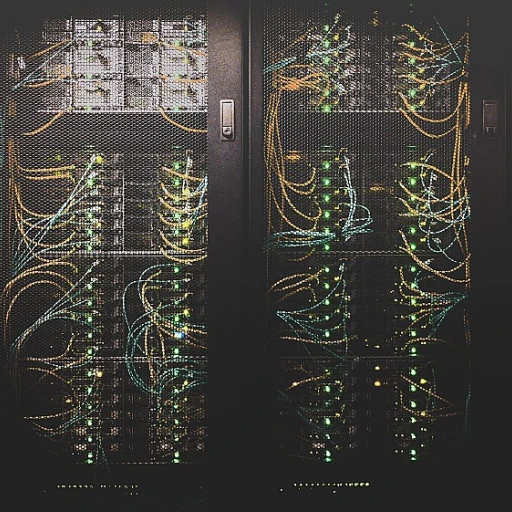
Understanding the Basics of Software Development Contracts
Grasping the Essentials of Software Development Contracts
When embarking on a software development project, understanding the fundamentals of a software development contract is crucial. These agreements serve as the backbone of the relationship between the developer and the customer, outlining the terms and conditions under which the work will be performed. A well-crafted development contract not only sets clear expectations but also helps mitigate potential disputes.
At its core, a software development agreement should clearly define the scope of work. This includes detailed software specifications, the services the developer will provide, and the expected delivery software timelines. Both parties should agree on these specifications to avoid misunderstandings later on. Using a contract template can be beneficial in ensuring all necessary elements are included, but customization is key to address the unique aspects of each project.
Another critical component is the intellectual property rights. The agreement must specify who owns the source code and any other intellectual property created during the project. This clarity prevents future disputes over ownership and usage rights. Additionally, the contract should address the handling of third-party software, including any licensing requirements or restrictions.
It's also important to include a section on change management. Projects often evolve, and the ability to adapt to changes in software specifications or project scope is vital. The agreement should outline how changes will be managed, including the process for written notice and approval by both parties.
Finally, the contract should provide a framework for dispute resolution. Whether through mediation, arbitration, or another method, having a predetermined process can save time and resources if disagreements arise.
For a deeper dive into the foundational concepts that underpin effective software development agreements, consider exploring the value hypothesis in software development. Understanding these concepts can significantly enhance the clarity and effectiveness of your contracts.
Key Clauses to Include in Your Agreement
Essential Elements for a Robust Software Development Agreement
When crafting a software development agreement, it is crucial to include key clauses that protect both the developer and the customer. A well-structured contract not only outlines the terms and conditions but also sets clear expectations for all parties involved.
Defining the Scope of Work
The scope of work is a fundamental component of any development agreement. It should clearly define the software specifications and the services the developer will provide. This section should include detailed descriptions of the project, including any deliverables and timelines. By setting these expectations upfront, both parties can avoid misunderstandings and potential disputes.
Intellectual Property Rights
Intellectual property rights are a critical aspect of software development contracts. The agreement should specify who owns the rights to the software, including any source code and documentation. Typically, the developer provides the software, but the customer may retain certain rights, depending on the agreement. Clearly defining these rights helps prevent future conflicts over ownership.
Change Management Procedures
Software projects often evolve, necessitating changes to the original specifications. A robust agreement should include a change management procedure, detailing how modifications will be handled. This might involve written notice from one party to the other, outlining the proposed changes and any impact on the project timeline or cost. Establishing a clear process for managing changes ensures that both parties remain aligned throughout the development process.
Payment Terms and Conditions
Payment terms are another essential element of a software development contract. The agreement should specify the payment structure, whether it's a fixed fee, hourly rate, or milestone-based payments. Additionally, it should outline any conditions for payment, such as the completion of specific deliverables or stages of the project. Clear payment terms help avoid disputes and ensure that the developer is compensated fairly for their work.
Dispute Resolution Mechanisms
Despite the best intentions, disputes can arise during a software development project. Including a dispute resolution mechanism in the agreement can help manage these situations effectively. This might involve mediation, arbitration, or other methods to resolve conflicts without resorting to litigation. By addressing potential disputes in the contract, both parties can feel more secure in their working relationship.
Navigating the Challenges of Future Software Projects
Anticipating Future Software Development Needs
In the ever-evolving landscape of software development, anticipating future needs is crucial for crafting effective agreements. As technology advances, the scope of projects can shift dramatically, necessitating a flexible approach to contracts. This flexibility ensures that both the developer and the customer can adapt to changes without unnecessary disputes.
Incorporating Flexibility in Agreements
To navigate the challenges of future software projects, agreements should include clauses that allow for modifications in project scope and specifications. This can be achieved by setting clear terms for change management, where both parties agree on a process for handling changes in software specifications. Such provisions help in maintaining a balance between the developer's ability to provide services and the customer's evolving needs.
Managing Third-Party Involvement
Another aspect to consider is the involvement of third-party services or components. As projects grow in complexity, the integration of third-party software becomes more common. Development agreements should clearly define the rights and responsibilities of each party concerning third-party software, including intellectual property rights and the delivery of source code. This clarity helps prevent disputes and ensures that all parties are aligned on the use of external resources.
Ensuring Clear Communication
Effective communication is key to managing future challenges in software development. Agreements should set expectations for regular updates and written notices regarding project progress. This transparency helps in identifying potential issues early, allowing for timely interventions and adjustments. By establishing a framework for communication, both the developer and the customer can work collaboratively towards successful project delivery.
Ensuring Flexibility and Adaptability in Contracts
Embracing Change with Flexible Agreements
In the ever-evolving landscape of software development, flexibility and adaptability in contracts are crucial. As projects progress, the initial software specifications may need adjustments to accommodate new technologies or changing customer needs. A well-crafted development agreement should allow for these changes without causing disputes between the parties involved.
One effective approach is to include a change management clause in the contract template. This clause should outline the process for proposing, reviewing, and approving changes to the project. It ensures that both the developer and the customer are on the same page when it comes to modifications in the work software or services provided.
Additionally, the agreement should specify how changes will impact the delivery software timeline and costs. By setting clear terms and conditions for these adjustments, the parties can avoid misunderstandings and maintain a productive working relationship.
Incorporating Flexibility in Intellectual Property Rights
Another critical aspect is the handling of intellectual property rights. As the software development progresses, new features or functionalities might be added, which could affect the property rights initially agreed upon. The development contract should provide a framework for addressing these changes, ensuring that both the developer and the customer retain their respective rights.
Including a provision for third-party involvement can also be beneficial. If a third party is required to provide services or contribute to the project, the contract should specify how their involvement will be managed and how it affects the overall agreement.
Documentation and Communication
Clear documentation and communication are vital for maintaining flexibility in software development agreements. The contract should require both parties to provide written notice of any proposed changes, along with detailed documentation of the new specifications. This ensures that all parties have a clear understanding of the changes and can make informed decisions.
By incorporating these elements into your software development contract, you can create a robust framework that accommodates change while minimizing the risk of disputes. This proactive approach not only benefits the developer and customer but also sets the stage for a successful project outcome.
Mitigating Risks and Managing Disputes
Addressing Potential Risks and Dispute Management
In the realm of software development, mitigating risks and managing disputes are crucial components of any development agreement. Both parties, whether a developer or a customer, must be proactive in identifying potential pitfalls and setting up mechanisms to address them effectively.
One of the primary risks in software projects is the misalignment of expectations. This often stems from vague software specifications or a lack of clear documentation. To prevent this, the development contract should include detailed specifications and a comprehensive template that outlines the scope of work. This ensures that both parties have a shared understanding of the project deliverables and timelines.
Another critical aspect is the inclusion of a change management process. Software projects are dynamic, and changes are inevitable. The agreement should provide a clear process for handling changes, including how they will be documented and approved. This helps in maintaining transparency and avoids potential disputes over scope creep or additional costs.
Intellectual property rights are another area where disputes can arise. The development agreement should clearly define the ownership of the source code and any other work software created during the project. This includes specifying whether the developer provides the customer with full property rights or if certain rights are retained by the developer.
In the event of a dispute, having a pre-defined resolution process can save time and resources. The contract should set out the steps for resolving disputes, which might include mediation or arbitration before resorting to litigation. This approach can provide a more amicable and cost-effective resolution.
Finally, it is essential to involve both legal and technical experts when drafting the agreement. Legal experts can ensure that the terms and conditions are comprehensive and enforceable, while technical experts can verify that the specifications and requirements are realistic and achievable. This collaboration helps in creating a robust development agreement that protects the interests of all parties involved.
The Role of Legal and Technical Experts
Leveraging Expertise for Robust Agreements
In the realm of software development, crafting a comprehensive development agreement is not just about listing terms and conditions. It requires the nuanced understanding of both legal and technical experts. These professionals play a pivotal role in ensuring that the agreement is not only legally sound but also technically feasible.
Legal experts are essential in drafting the development contract. They ensure that the agreement template adheres to all necessary legal standards and that the rights of both parties are protected. This includes safeguarding intellectual property rights and setting clear terms for dispute resolution. Legal professionals also help in structuring the contract template to accommodate changes and provide written notice requirements, which are crucial for managing the dynamic nature of software projects.
On the technical side, developers and technical experts provide insights into the software specifications and the practical aspects of the project. They ensure that the specifications are realistic and that the developer can provide the services as outlined. Their input is vital in defining the scope of work, including the delivery software and source code requirements. This collaboration helps in setting clear expectations for both the developer and the customer, minimizing the risk of misunderstandings.
Furthermore, involving third-party experts can be beneficial, especially when the project involves complex technologies or integrations. These experts can provide an unbiased perspective and help in identifying potential challenges early on. By leveraging their expertise, both parties can create a more robust and adaptable agreement, capable of accommodating future changes in the software development landscape.
In conclusion, the involvement of legal and technical experts is indispensable in crafting effective software development agreements. Their combined expertise ensures that the agreement is comprehensive, adaptable, and capable of addressing the evolving needs of software projects.















